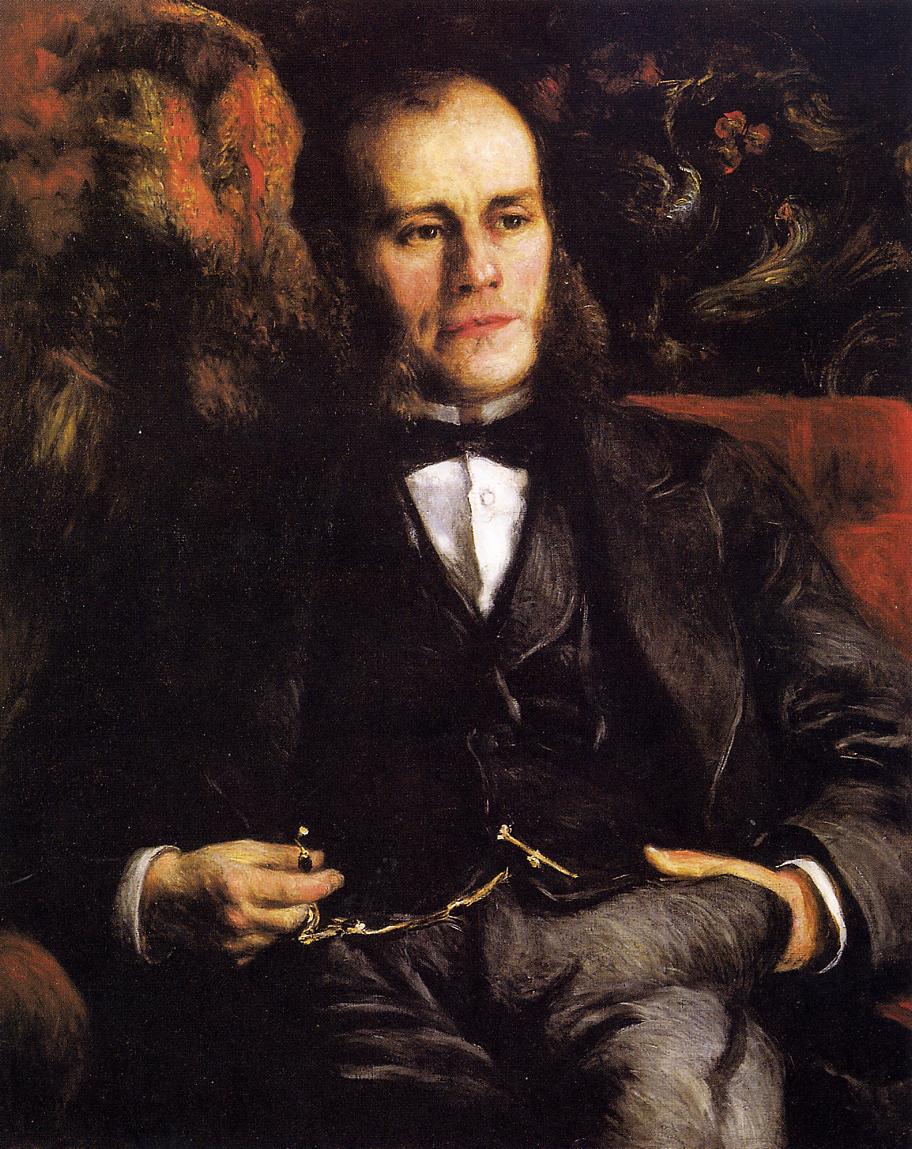art-Renoir.com
Auguste Renoir 1841-1919
Auguste Renoir - Pierre-Henri Renoir 1870
 Pierre-Henri Renoir, the artist's brother |
From Christie's The Art People:
This painting will be included in the forthcoming Renoir catalogue critique being prepared by the Wildenstein Institute and established from the archive funds of François Daulte, Durand-Ruel, Venturi, Vollard and Wildenstein.
We are grateful to Guy-Patrice and Michel Dauberville for confirming that this picture is included in their Bernheim-Jeune archives as an authentic work.
Painted in 1870, Portrait de Pierre-Henri Renoir is a picture of the artist's older brother that brims with confidence, both in the presentation of the assured Pierre-Henri and in the virtuoso brushwork with which he has been captured. The lush, feathered brushstrokes build up a shimmering portrait that sings with vitality, bringing Pierre-Henri to life before us. During this period, Renoir seldom painted the members of his family, especially considering how frequent the members of his own family would become in his later life. This therefore adds to the rarity of a picture such as Portrait de Pierre-Henri Renoir, which is an early tribute both to the importance of Henri in his brother's life, and to the burgeoning skills of the Impressionist painter.
In his memoir of his father, Jean Renoir recalled with some error that 'Henri worked for David, a silversmith, in the Rue des Petits Champs. M. and Mme. David had grown fond of him because of his taste and skill, and my uncle was not indifferent to the charms of Mlle. Blanche David. The question of marriage arose. Although the Davids were Jews there was no objection on the score of religion. In lower-middle-class Paris circles religious fanaticism had long since disappeared and racial prejudice had not yet shown itself' (J. Renoir, Renoir: My Father, London, 1962, p. 50). In fact, Henri's employer was called Daniel, but the fact that he married Blanche, who is pictured in a pendant portrait now in the Fogg Art Museum in Harvard, implies that the gist, despite the inaccurate recollection of names, is correct.
The calm of this work was reflected by the calm that apparently dominated Henri's successful life. Jean Renoir recalled how his father looked upon Henri, who had become positively affluent and respectable through his own exertions, as a sort of hero. This calm is distinctly at odds with the turmoil that would tear France apart later in 1870, with the joint commotion of the Franco-Prussian War and the Commune, and this calm affected Pierre-Auguste in particular, as he was called up to join the cavalry.
Another significant revelation in Jean Renoir's memoir involved the beginnings of Pierre-Auguste's artistic endeavours. For it was Henri, along with their father, who had initially encouraged him to draw. Likewise, it had been logical for the family to encourage Pierre-Auguste to find work in a porcelain factory, a parallel position in some ways to that of Henri as an engraver of gems. The Renoir family took on positions that opened the opportunity to be a skilled bourgeois, and it is precisely as this that Henri is presented in his portrait. There is more respectability than affability about him, and his bourgeois credentials are emphasised through the use of the plush materials of the chair and walls, and also the gold watch chain, upon which is almost certainly an item of Henri's own craftsmanship. Henri's skills were so pronounced that he had published works on engraving and on designs that had been translated into English. It is another tribute to his skills and recognition in his own right that Emile Zola, on seeing a painting by Renoir (Lise from 1867, now in the Folkwang Museum in Essen) believed that it was the work of Pierre-Henri and not Pierre-Auguste.
Henri had a further influence on his younger brother when he tried to share his enthusiasm for Oriental wares with his brother. To Henri's surprise and possible dismay, Renoir was more interested in the subtle and restrained Ming wares to the rich, overblown lacquered objects. This possibly began Renoir's interest in Japonisme, which would become so vital to Renoir and the Impressionists. It is a tribute to his respect for his brother's taste that the background of Portrait de Pierre-Henri Renoir features ornamental decorations that recall this type of exuberance.